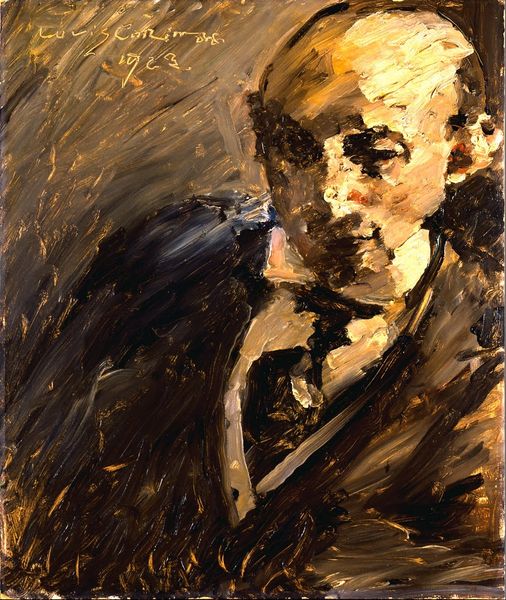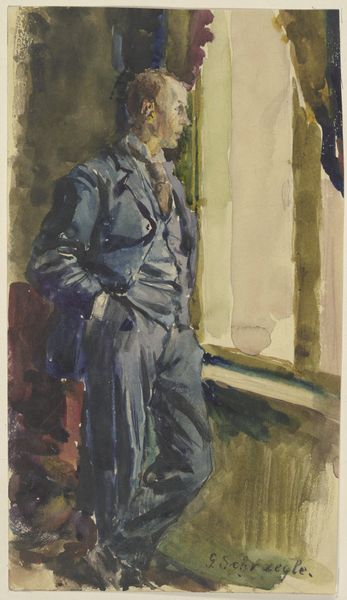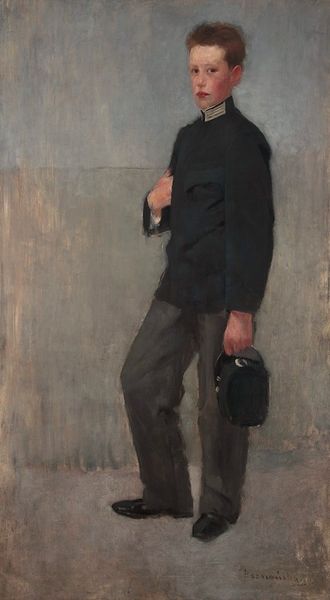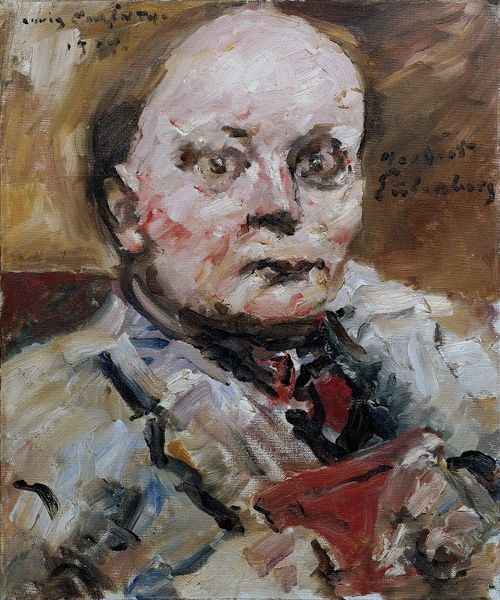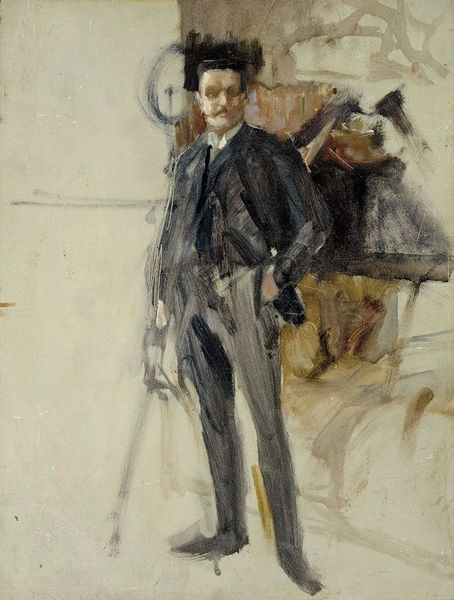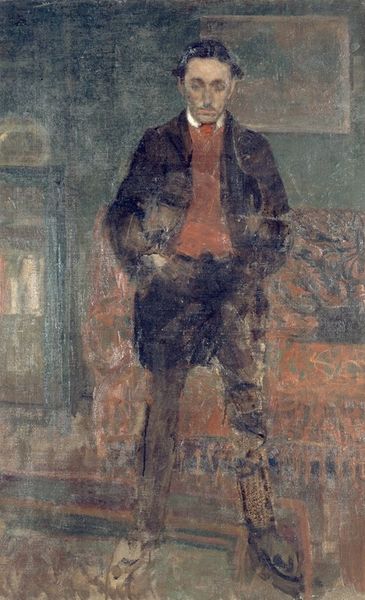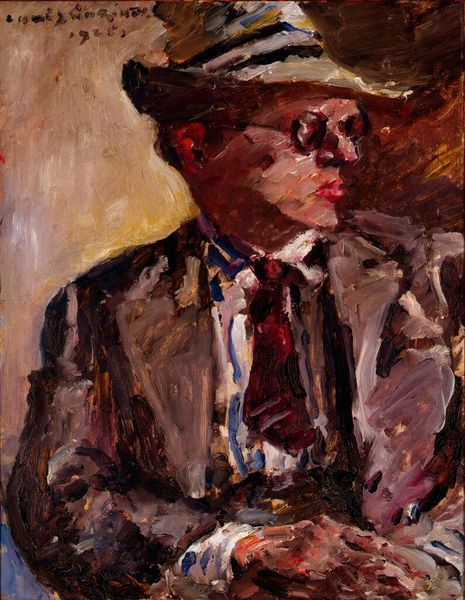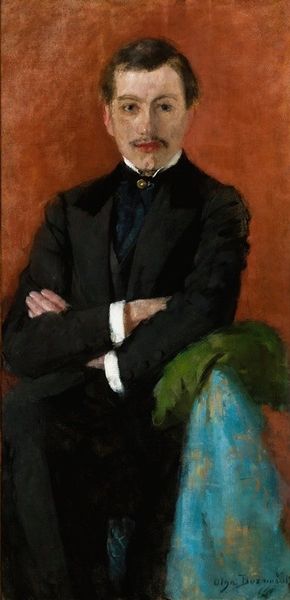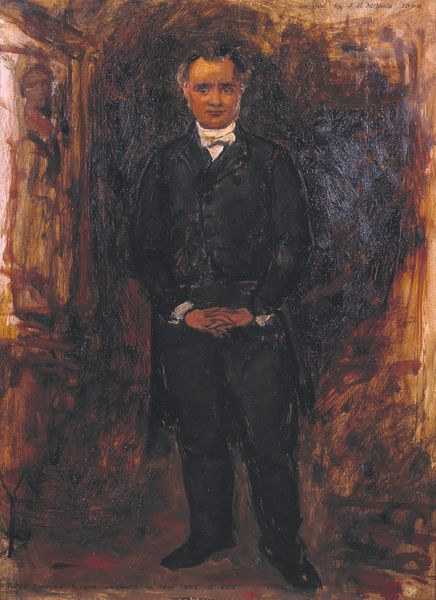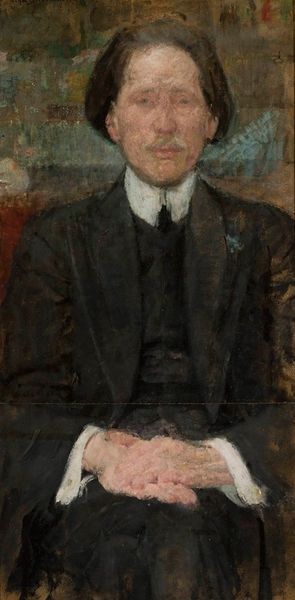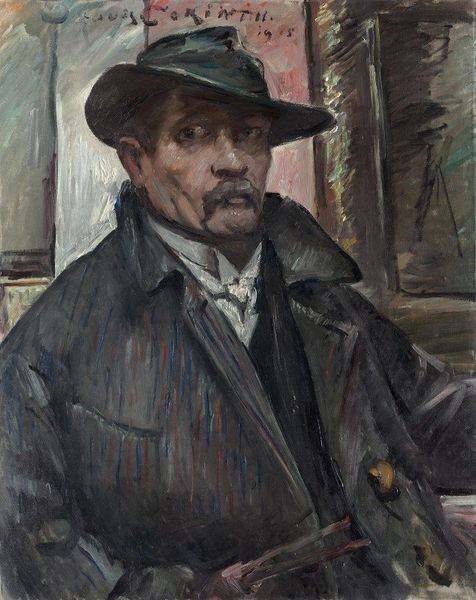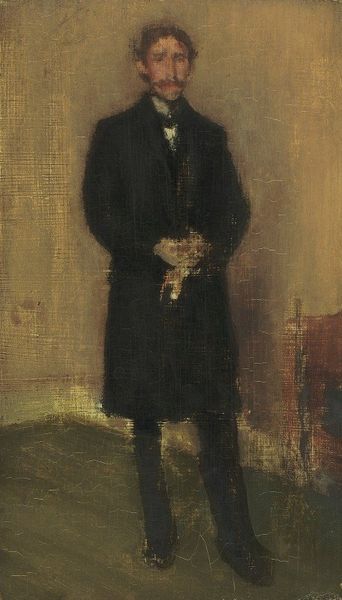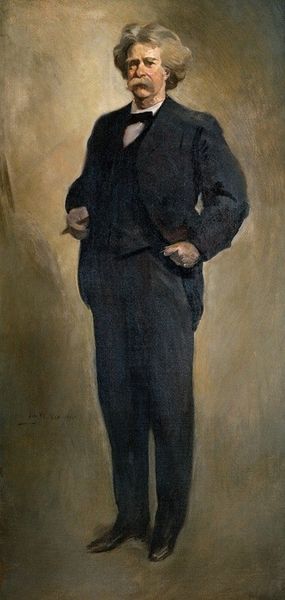
oil-paint
#
portrait
#
figurative
#
oil-paint
#
oil painting
#
expressionism
#
genre-painting
#
modernism
Copyright: Public Domain: Artvee
Curator: Before us, we see Lovis Corinth’s "Portrait of Reich President Friedrich Ebert," completed in 1924. Editor: My initial reaction is a sense of formality tempered with something... vulnerable. The dark palette and loose brushstrokes almost undermine the sitter’s stately attire. Curator: That vulnerability, I think, is key. Ebert, as the first president of the Weimar Republic, carried the weight of a nascent democracy and a defeated nation. His image here subtly reveals the pressure. Editor: Indeed. Look at the composition—the heavy vertical lines beside him, seemingly pressing him forward, perhaps reflecting his role navigating a society rebuilding itself after immense turmoil. The muted tones underscore this mood. Curator: Ebert’s attire--dark suit, crisp white shirt, and bow tie--reflects his dedication to projecting an image of respectability and authority amidst the chaos. However, even those markers of power appear softened. Editor: Exactly, the materiality resists stark representation; the paint seems to dissolve any sense of stoicism. Also, notice the gesture of the hand in his pocket – a pose of understated power, yet the hand itself is almost lost in the shadows, furthering that subtle sense of uncertainty. Curator: That hand could also symbolize his working-class roots; a deliberate gesture reminding viewers of his connection to the people, not the aristocracy. The shadow almost creates a halo effect. Editor: Fascinating, I can see that interpretation! Corinth's use of chiaroscuro here transcends mere technique; it embodies a psychological depth, playing with societal and personal expectations. Curator: Ultimately, I think this portrait succeeds by showing Ebert not just as president but as a man tasked with carrying immense responsibility. It captures a critical moment in German history, marked by both hope and instability. Editor: For me, it highlights the struggle between public facade and inner reality through skillful use of visual language and form. The portrait asks us to consider the weight of leadership and the humanity behind it.
Comments
No comments
Be the first to comment and join the conversation on the ultimate creative platform.
